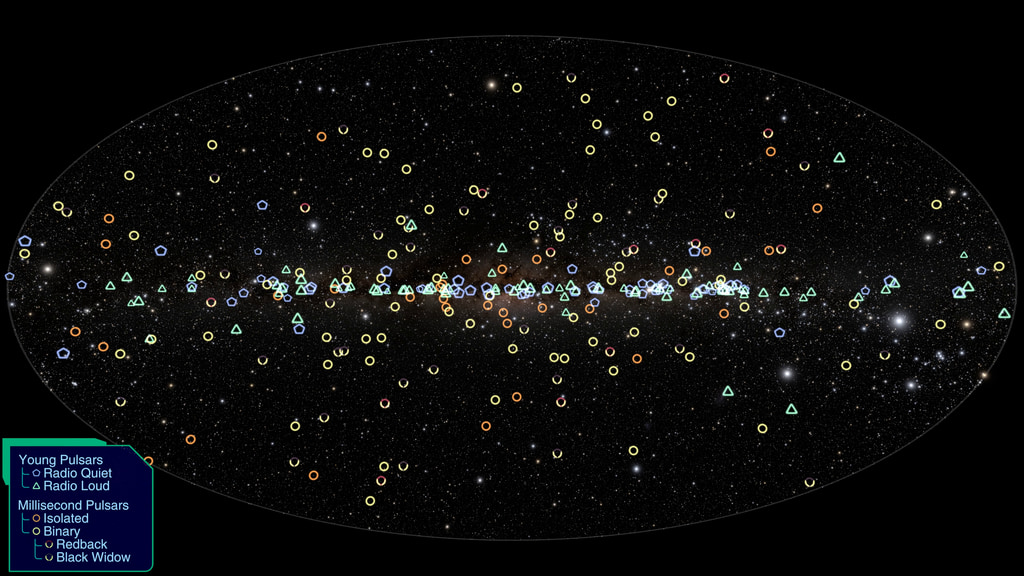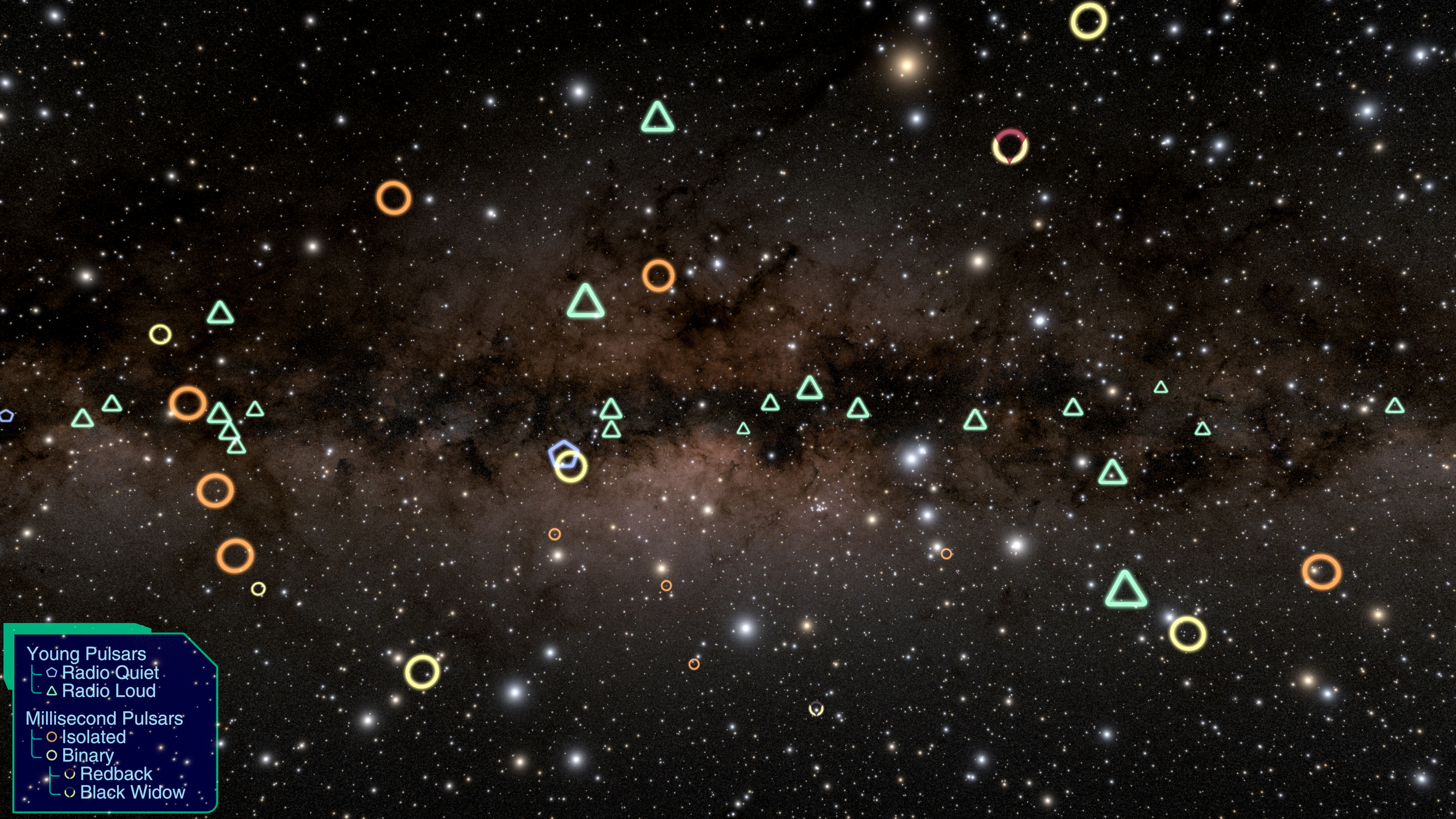Fermi Gamma-ray Pulsar Catalog WorldWide Telescope Interactive
Before NASA’s Fermi Gamma-ray Space Telescope launched in 2008, only a handful of pulsars, including the Crab, Vela, and Geminga, were known to emit gamma-rays, the highest-energy form of light. Shown here are 294 gamma-ray pulsars detected by Fermi. Young pulsars, formed when massive stars explode, are the slowest rotators, typically spinning about 10 times a second. Paradoxically, their older siblings, called millisecond pulsars (MSPs), spin much faster, up to hundreds of times a second, thanks to the effects of a stream of matter pulled from a companion star. In spider systems, the companion is all but consumed. The most energetic spiders may fully evaporate their companions, leaving behind only an isolated MSP. Studying pulsars provides insights into the interplay of gravity, radiation, and magnetic fields with matter in the most extreme state we can observe directly.
The WorldWide Telescope is a tool for showcasing astronomical data and knowledge. It’s not a physical telescope — it’s a suite of free and open source software and data sets that combine to create stunning scientific visualizations and stories.
Credits
Please give credit for this item to:
NASA's Scientific Visualization Studio
-
Producers
- Mark SubbaRao (NASA/GSFC)
- Scott Wiessinger (KBR Wyle Services, LLC)
-
Technical support
- Laurence Schuler (ADNET Systems, Inc.)
- Ian Jones (ADNET Systems, Inc.)
-
Writer
- Francis Reddy (University of Maryland College Park)
-
Visualizers
- Érika Silva (U.S. Space and Rocket Center)
- Peter K. G. Williams (Center for Astrophysics | Harvard & Smithsonian)
- Jon Carifio (Center for Astrophysics | Harvard & Smithsonian)
- A. David Weigel (U.S. Space and Rocket Center)
-
Scientist
- David A. Smith (Laboratoire d'Astrophysique de Bordeaux)
Release date
This page was originally published on Tuesday, November 28, 2023.
This page was last updated on Monday, November 27, 2023 at 1:38 PM EST.

